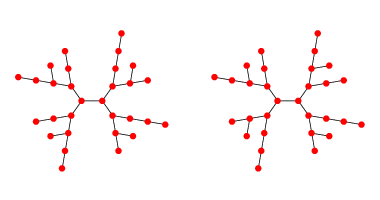Tim Tyler: Williams, Plan and Purpose in Nature (review)
Transcript:
Hi. I'm Tim Tyler, and this is a review of this book:
Plan and Purpose in Nature: The Limits of Darwinian Evolution by George C Williams.
George Williams is an expert in Darwinian evolution, and this book is an attempt to condense his knowledge down into a format which is easily digested by those new to the field. It is very readable and entertaining book.
It covers basic issues in evolutionary biology, particularly adaptationism, the unit of selection, sexual reproduction, senescence and medicine.
Williams embraces the term "The adaptationist program" - saying he almost selected it as the title of his book. This phrase originated with Gould and Lewontin - and was intended as a term of derision. No doubt Williams is making a point by using the term, but I would have preferred that adaptation enthusiasts left it alone - making it harder for critics to point at instances of the alleged phenomenon.
The book was published in 1996 - and I thought it was interesting to see what had changed since then. Williams offered an explanation for sexual reproduction that invokes generating diversity to help adapt to novel environments. For example plants like strawberries reproduce using runners and vegetative reproduction locally, but produce sexual seeds for transmission of offspring to a diverse range of remote environments. That is not a completely unreasonable explanation, but the modern way of putting it invokes parasites. If it wasn't for the need to evade parasites, the environment would often not change fast enough to favour sexual recombination. Williams does mention parasites, but they aren't the main feature. Another area where I noticed there were some oddities were in the chapter on senescence. The disposable soma theory and the antagonistic pleiotropy theory of aging are given without being named - and Williams emphasizes how senescence of living bodies is nothing like senescence of machinery - saying:
In thinking of senescence, the analogy to the wear and tear, or corrosion, or other process that ultimately causes an artificial device to fail is utterly misleading.
I think that the relationship here is close enough to not deserve being described as "utterly misleading". Indeed these days we have new modern theories of senescence - like "reliability theory" - that apply to both machinery and bodies, that highlight the relationship between senescence in both kinds of system.
The section about group selection has stood the test of time reasonably well. Williams says that most animal groups are not functionally organized, and that most groups are "just mobs of self-seeking individuals". That's true - though these days people might take more care to mention the possibility of cooperation with kin - i.e. genetic selfishness, not individual selfishness.
The section about medicine is welcome as well. However, while Darwinian medicine sounds nice, we seem firmly embedded in the era of "drug company" medicine, with little sign of an end in sight.
At the end of the book there's a section on philosophical implications. Williams describes the product of natural selection as immoral. He says "although the biological creation process is evil it is also abysmally stupid". His example of the horrors of natural selection is infanticide by males, which he argues is natural and adaptive - though obviously infanticide by males is certainly not adaptive in many modern societies today - since it is likely to result in extended incarceration. Williams endorses Dawkins' proposed rebellion against the selfish replicators and responds to naturalistic moralities with condemnation. This is a common position these days, but human morality sits firmly in the domain of evolutionary theory, and if your theory of evolution doesn't explain it, you need to rethink it. I figure that evolutionary theory offers reasonable explanations of morality that we don't need to apologize for.
Anyway, this is still a fine book - though perhaps some learned readers might find it too simplistic.
Enjoy,

 Mimicry is not normally regarded as being a form of kin selection. However, it is pretty clear that mimics engage in copying of traits - and if the individual which is being copied changes its traits, the mimic tracks the changes. Thus, mimicry can be classified as a form of copying (or inheritance) that crosses species boundaries.
Mimicry is not normally regarded as being a form of kin selection. However, it is pretty clear that mimics engage in copying of traits - and if the individual which is being copied changes its traits, the mimic tracks the changes. Thus, mimicry can be classified as a form of copying (or inheritance) that crosses species boundaries. In the 1980s,
In the 1980s,  In biology, altruism is typically defined rather like this (from Trivers, 1971):
In biology, altruism is typically defined rather like this (from Trivers, 1971): Both
Both  These days, there's a scientific consensus about group selection and kin selection.
These days, there's a scientific consensus about group selection and kin selection. It was observed early on that most of the evidence that was cited as favouring group selection seemed to be explained rather well by kin selection.
It was observed early on that most of the evidence that was cited as favouring group selection seemed to be explained rather well by kin selection. Group selection enthusiasts were dissatisfied with the consensus that group selection couldn't compete with individual-level selection. They counter-attacked in a number of ways, saying that:
Group selection enthusiasts were dissatisfied with the consensus that group selection couldn't compete with individual-level selection. They counter-attacked in a number of ways, saying that: Price's insight about the generality of selection made slow progress into the mainstream.
Price's insight about the generality of selection made slow progress into the mainstream.  One of the more significant developments in the early history of kin selection was the contribution of George Price. Price had read Hamilton's papers, and contributed a mathematical model of kin selection that proved superior to Hamilton. Hamilton had worked with the concept of shared genes. Price developed a largely-equivalent formulation based on correlations. Price's maths was better than Hamilton's - and it raised the possibility of spiteful behaviour.
One of the more significant developments in the early history of kin selection was the contribution of George Price. Price had read Hamilton's papers, and contributed a mathematical model of kin selection that proved superior to Hamilton. Hamilton had worked with the concept of shared genes. Price developed a largely-equivalent formulation based on correlations. Price's maths was better than Hamilton's - and it raised the possibility of spiteful behaviour. The dust-up between kin selection and group selection began in 1964 with a paper by John Maynard Smith titled "
The dust-up between kin selection and group selection began in 1964 with a paper by John Maynard Smith titled "
 The term "
The term "